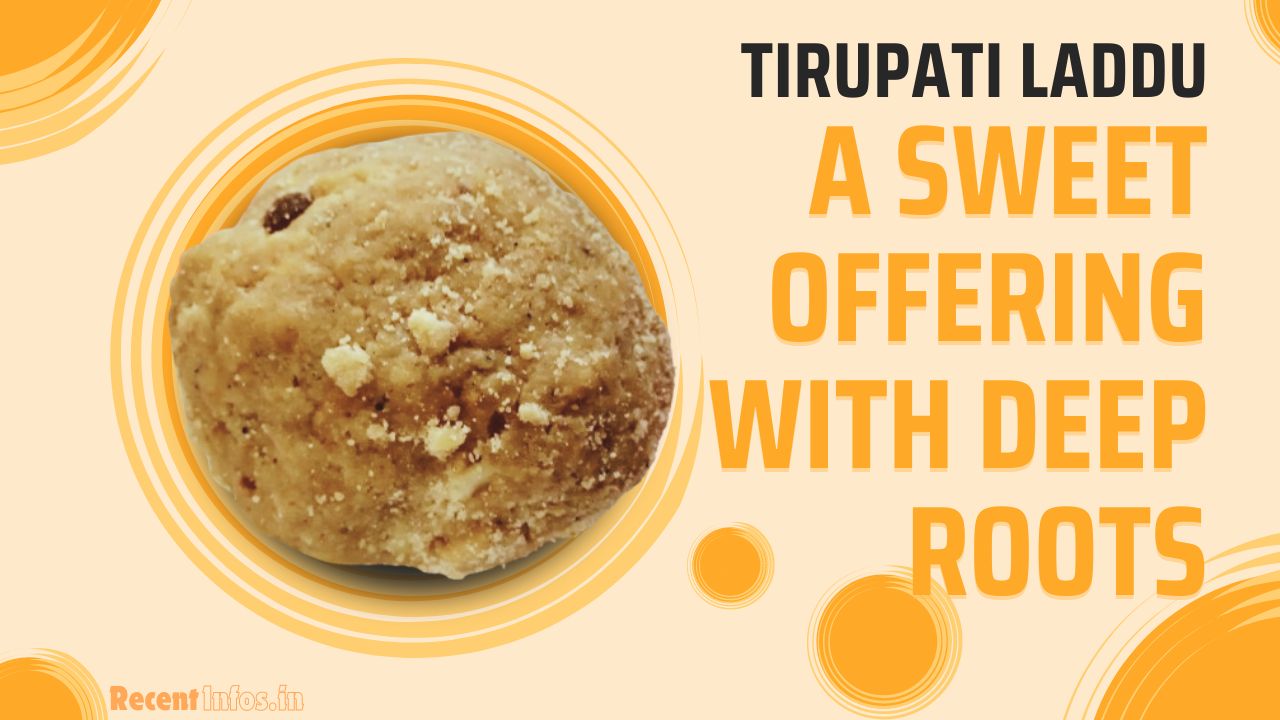The Tirupati laddu, also known as Sri Vari Laddu, is a revered sweet offering at the Tirumala Venkateswara Temple in Tirupati, Andhra Pradesh. This iconic prasadam has become synonymous with the temple itself, representing devotion, tradition, and the rich cultural heritage of India. With a history that spans over 300 years, the laddu is not just a culinary delight but also a symbol of faith for millions of devotees who visit the temple each year.
Historical Significance
The origins of the Tirupati laddu can be traced back to August 2, 1715, when it was first offered to Lord Venkateswara. This date marks the beginning of a tradition that has flourished over the centuries. The laddu was initially prepared by temple officials and has since evolved into a sacred offering that is integral to the temple’s rituals.
In ancient inscriptions dating back to 1480, references to similar offerings were noted, indicating that the practice of presenting sweets to deities has deep historical roots in Indian culture. The laddu as we know it underwent several transformations over time, particularly under British rule in the 1940s when its recipe was standardized.
The architect behind this transformation was Kalyanam Iyengar, who introduced a systematic approach to laddu preparation known as the Mirasidari System. This system designated specific individuals responsible for preparing the laddus, ensuring consistency and quality. The tradition continued until 2001, when the Tirumala Tirupati Devasthanams (TTD) took over the entire process.
In recognition of its unique identity and cultural significance, the Tirupati laddu was granted Geographical Indication (GI) status in 2009. This designation protects its name and ensures that only those made within the temple premises can be sold as “Tirupati laddus.” This legal protection helps prevent counterfeiting and maintains the integrity of this sacred offering.
The Preparation Process
The preparation of Tirupati laddus is a meticulous process that takes place in a specially designated kitchen known as the Potu. This kitchen is located within the temple complex and is equipped with modern facilities to meet the high demand for laddus. On average, around 300,000 laddus are prepared daily, especially during peak pilgrimage seasons.
Ingredients
The primary ingredients used in making Tirupati laddus include:
- Gram Flour (Besan): The base ingredient that gives the laddu its structure.
- Ghee: High-quality clarified butter that adds richness and flavor.
- Sugar: Provides sweetness; traditionally jaggery was used but has been replaced by refined sugar for consistency.
- Cashews and Raisins: Added for texture and taste.
- Cardamom: A key spice that enhances aroma and flavor.
- Sugar Candy: Occasionally included for additional sweetness.
The Cooking Process
The cooking process follows a strict method known as dittam, which outlines specific proportions for each ingredient. Over its history, this recipe has been modified six times to adapt to changing needs while maintaining its essence.
- Preparation of Ingredients: All ingredients are sourced from trusted suppliers through a tendering process managed by TTD. For instance, about 10 tonnes of gram flour and 10 tonnes of sugar are used daily.
- Cooking Method: Historically, laddus were cooked over firewood; however, since 1984, LPG has been used for efficiency and safety. The cooking process involves roasting gram flour in ghee until it reaches a golden brown color before adding sugar syrup.
- Mixing and Shaping: Once cooked, cashews, raisins, and cardamom are mixed into the batter. The mixture is then shaped into round balls weighing exactly 175 grams each—this weight standardization ensures uniformity across batches.
- Cooling and Packaging: After shaping, laddus are allowed to cool before being packaged for distribution. Proper storage techniques ensure they remain fresh for up to 15 days, making them suitable for both immediate consumption and gifting.
- Quality Control: TTD employs rigorous quality control measures to ensure that every batch meets specific standards. A state-of-the-art food testing laboratory conducts regular inspections on ingredients like cashews and sugar to maintain high quality.
Cultural Impact
The Tirupati laddu is not only a spiritual offering but also holds significant cultural importance. It represents hospitality and generosity within Indian culture; sharing food is viewed as an act of love and kindness. Devotees often take laddus home as souvenirs or gifts for family and friends after visiting the temple.
Moreover, during festivals and special occasions, these laddus are commonly used in religious ceremonies, reinforcing community bonds among families and friends. The act of consuming a Tirupati laddu is believed to bring blessings from Lord Venkateswara, enhancing its spiritual significance.
Economic Contribution
The Tirupati laddu is not only a spiritual offering but also a significant economic contributor, generating around ₹500 crore (approximately $60 million) annually through laddu sales alone. Approximately 300,000 laddus are prepared daily in the temple kitchen known as the Potu, making it a vital source of revenue for the Tirumala Tirupati Devasthanams (TTD), which manages the temple.
Background of the Controversy
The controversy began when lab tests revealed that animal fats, including beef tallow and lard, were allegedly found in the ghee used to prepare the laddus. These findings were reported by the Telugu Desam Party (TDP), which claimed that the previous Y.S. Jagan Mohan Reddy government had compromised the quality of this revered prasadam. The TDP has called for accountability, suggesting that the current administration has inherited a troubling legacy regarding the temple’s offerings.
Quality Control Measures
To ensure quality, TTD employs stringent measures in the preparation of laddus. Each laddu must weigh exactly 175 grams, and ingredients like chickpea flour (besan), sugar, and ghee are carefully monitored. However, recent allegations have raised concerns about whether these standards have been compromised. Following the lab reports indicating contamination, TTD has blacklisted suppliers found to be providing substandard ghee and has switched to sourcing from more reputable vendors.
Political Reactions
The situation has led to a heated political blame game between the TDP and YSRCP. Andhra Pradesh Chief Minister N. Chandrababu Naidu has publicly criticized the previous government for allegedly allowing such practices to occur, while YSRCP leaders have defended their administration and called for an independent investigation into the matter.
Devotee Sentiments
Devotees view the Tirupati laddu as a sacred offering from Lord Venkateswara, and any suggestion of adulteration has caused outrage among many Hindus who adhere to strict dietary laws. The implications of these findings are profound, as they challenge not only the integrity of the prasadam but also affect the trust that devotees place in temple authorities.
TTD has responded by assuring devotees that stringent quality checks are in place and that any suppliers found violating standards will be blacklisted. The organization remains committed to maintaining the integrity of this beloved prasadam amid ongoing scrutiny.
Conclusion
The Tirupati laddu embodies not only culinary excellence but also deep-rooted traditions that span centuries. Its rich history reflects India’s vibrant culture while serving as a symbol of devotion for millions who visit Tirumala each year. As preparations continue in the Potu kitchen with unwavering dedication to quality and authenticity, this sweet offering will undoubtedly remain an integral part of spiritual life at Tirumala Venkateswara Temple for generations to come.
By understanding its historical significance and preparation process, devotees can appreciate more deeply what makes this Tirupati Laddu so special—not just as a treat but as a cherished part of their spiritual journey at one of India’s most revered temples.












Post Comment